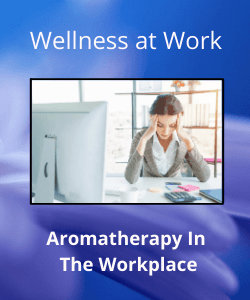 Welcome to the first post in our Wellness At Work series. Read on to find out how you can use aromatherapy in the workplace to help you deal with stress and anxiety, to fight fatigue, for improving mental clarity and more.
Welcome to the first post in our Wellness At Work series. Read on to find out how you can use aromatherapy in the workplace to help you deal with stress and anxiety, to fight fatigue, for improving mental clarity and more.
As well as giving you some easy to use methods, we’ve chosen 6 popular essential oils and have highlighted their particular benefits. You can use these as a starting point on your aromatherapy journey.
We’ve also included some basic safety guidelines which you should read first to gain a better understanding of aromatherapy, essential oils and the best ways to use them.
There are also links for further learning and information throughout the post if you’re interested in developing your knowledge on the subject. But first we’ll take a quick look at what aromatherapy is and how it has developed since ancient times.
In This Article :
- What Is Aromatherapy
- Aromatherapy And Mainstream Medicine Today
- Safe Use Of Essential Oils – The Basics
- How To Use Aromatherapy In The Workplace
- Popular Essential Oils And Their Benefits
What Is Aromatherapy?
Aromatherapy is also known as essential oil therapy. By extracting the oils and aromatic compounds from different parts of different plants and condensing them into liquid form, the “essence” of a plant is captured. This is what we call essential oil. Aromatherapy is the use of these oils for improving or maintaining health and wellbeing, as well as for cosmetic purposes.
The use of essential oils dates back thousands of years to Ancient China, Egypt, Greece, India and Rome. Through the middle ages essential oil therapy and herbal remedies became the mainstream medicine of the day. In the 16th and 17th centuries aromatic waters, i.e. cologne containing essential oils, became extremely popular in masking the scents of poor hygiene. (Then people began to wash more instead of just covering up bad smells.)
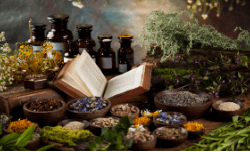 In the 18th century, with the advent of synthetically created medicines, the use of plants and herbs began to diminish. The 19th century saw a rise of synthetically created “natural” remedies. Although this raised the profile once more of essential oils, it resulted in a much lower quality of oil which didn’t deliver the goods and led many to disbelieve in this ancient healing method.
In the 18th century, with the advent of synthetically created medicines, the use of plants and herbs began to diminish. The 19th century saw a rise of synthetically created “natural” remedies. Although this raised the profile once more of essential oils, it resulted in a much lower quality of oil which didn’t deliver the goods and led many to disbelieve in this ancient healing method.
In the 20th century a good amount of research was carried out on the psychological effects of essential oils, particularly in France. Many other therapeutic and cosmetic uses were rediscovered during this time and the term “aromatherapie” was used for the first time by French physician Dr. Jean Valnet. Hence, aromatherapy was born.
In the 1970’s the Tisserand brand of essential oils made their debut, developed by one of today’s leading global authorities on aromatherapy, Robert Tisserand. He’s still on the scene today, having devoted more than 40 years to the subject. He’s particularly keen on educating people about the safe use of essential oils. (More about that below.)
If you’re interested in gaining a deeper understanding of aromatherapy, the Tisserand Institute is a great place to start. Founded by essential oils expert Robert Tisserand, you’ll find a wealth of information on all aspects of aromatherapy.
Aromatherapy And Mainstream Medicine Today
Aromatherapy is widely practiced today as a complementary medicine i.e. it falls outside of the mainstream medicine bracket, but it’s used alongside conventional treatment in our Western World. There are those who use it as an alternative practice which basically means it’s used instead of mainstream medicine. At this point, let’s be clear on 3 things :
- If you have a known medical issue or have any concerns about your physical or psychological health, you should see your doctor or other relevant professional
- Alternative therapies should not be used instead of conventional medicine, but many can be used alongside it – again, speak to your doctor and consult with your complementary therapist
- Before practicing aromatherapy you must be aware of the safety rules. We’ve given you the basics below and a link for further information.
(Please also be aware I’m not a doctor nor am I an aromatherapy practitioner. Click here for medical disclaimer.)
Safe Use Of Essential Oils – The Basics
 Essential oils are natural chemicals and should therefore be used with caution. A little knowledge is required to use them safely and in order to avoid possible adverse reactions. But don’t let this put you off – when used correctly there’s a vast range of benefits associated with their use – both physical and psychological.
Essential oils are natural chemicals and should therefore be used with caution. A little knowledge is required to use them safely and in order to avoid possible adverse reactions. But don’t let this put you off – when used correctly there’s a vast range of benefits associated with their use – both physical and psychological.
The main points to be aware of when using essential oils are as follows :
DO NOT Apply Them Neat
This is a hotly debated topic and there are those who believe it’s OK to use essential oils neat. However, there are many others who disagree due to the risks involved – from a slight skin irritation to burns and long-term skin damage or worse.
It’s easy enough to dilute essential oils. You can use a carrier oil such as coconut, jojoba or sweet almond oil. These are used when applying oils topically; they help to “carry” them through the skin to be absorbed, along with their therapeutic properties.
You can use an emulsifier to dilute essential oils. Emulsifiers acts as a middle man, allowing oil and water to mix. A regular household example is shower gel or bubble bath. By mixing a few drops of essential oil with your bath foam you can then mix the solution with water.
You can also dilute essential oils with lotions such as face or body cream. If you decide to go down this route, unscented lotions won’t mess with the aromatic properties of your chosen oil(s).
(Note – if using essential oils in a diffuser it’s OK to use them neat, but please DO NOT apply neat to the skin.)
Choose Good Quality Oils
Using good quality oils can improve the therapeutic benefits of aromatherapy and reduce the risk of an adverse reaction. There are 2 main factors to be aware of here :
- Firstly, look out for organic oils. These are extracted from plants that have been grown naturally and without the use of chemicals such as pesticides.
- Secondly, choose oils that are pure. Check that they don’t contain synthetic “fillers” which are used to bulk out the oil.
Good quality oils usually cost a little more but don’t be fooled by lesser brands with a higher price tag. Check the ingredients and organic certification of each oil you use. Shop for brands including Tisserand Aromatherapy, US Organic, Fiora Naturals, UpNature and Pura D’Or.
People And Pets
*Whichever oils you choose, caution is advised when using on or around pregnant or breastfeeding women, babies, children, animals and allergy sufferers.
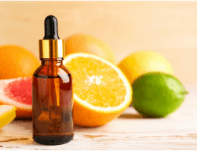 *All essential oils have particular properties. Some are more potent that others. Some have a specific set of safety rules to follow. For these reasons, when you are choosing your oils, please do a little research first to make sure you understand what and who they can be used for. Click here to find out more about the safe use of essential oils.
*All essential oils have particular properties. Some are more potent that others. Some have a specific set of safety rules to follow. For these reasons, when you are choosing your oils, please do a little research first to make sure you understand what and who they can be used for. Click here to find out more about the safe use of essential oils.
How To Use Aromatherapy In The Workplace
In this section we’ll look at different ways you can introduce essential oils into the workplace by applying them topically or by inhalation.
Topical Use
This is where essential oils are applied to the skin. Once they’ve passed through the skin they’re absorbed by the tissue underneath as they make their way into the bloodstream.

Dilute a few drops of essential oil with a carrier oil and take your mixture to work. Keep it handy in your desk so you can give yourself a mini neck massage when you have a spare 5 minutes. This is great for relieving aches and pains caused by sitting for too long or if you find yourself tensing up in stressful situations.
You can also give yourself a hand rub after a long stint of keyboard work, or even better get a colleague to do it for you. Just rub a little of your magic mixture in to gently relieve the tissue and tendons in your hands and wrists.
If you work in an office with air conditioning, this can be very drying on the skin. Add a few drops of essential oil to your unscented face or hand cream and use it to keep yourself moisturized throughout the day. (You can also add a few drops to your shampoo and conditioner – lavender and rosemary are good for dry hair.)
Rollerballs are easy to use and a convenient way to give yourself a boost. They’re around 2 or 3 inches long so they easily fit into your bag or pocket and can be carried around all day. Add a few drops of essential oil and carrier oil to the vial, put the lid on and mix gently. Apply to the temples if you feel a headache coming on. (Lavender works wonders.)
You can also use your rollerball on the inner wrist or behind the ears for easy absorption. Choose whichever essential oil suits your needs best – for stress relief, clearing the mental fog, as a pick me up and more. (Be super-prepared and make up a selection to keep in the office.) As well as enjoying the benefits of topical application, inhaling the vapors is also extremely pleasant.
More about inhalation below and in the next section you’ll find uses and benefits of 6 popular essential oils.
Inhalation
Diffusers disperse essential oil molecules into the air which then make their way into the system by means of inhalation. This can be a very simple and effective way to enjoy aromatherapy, but if you share an office please check with your colleagues that it’s OK to do so and safe. Remember to take extra caution with pregnant or breastfeeding women and also be careful around those with allergies.
Likewise, if you’re working from home be careful which oils you use around children or pets.

If all’s OK, choose your diffuser wisely – there are many types on the market. Ultrasonic diffusers use water to help disperse the oil molecules and nebulizers use pressurized air. Evaporative diffusers come in electronic versions (which use a fan for dispersion), or non-electronic versions where the oil molecules evaporate naturally (e.g. reed diffusers.)
If you’re looking for something a little smaller which is easier to carry around there are some cool options available. Perhaps a mini USB flash drive diffuser – simply add a few drops of oil and plug in. Or aroma jewelry – there are heaps of styles available which feature aroma balls or pendants. Add a little oil to the enclosed pad and enjoy the subtle benefits throughout the day.
To find out more about these and other methods of aromatherapy click here.
Be sure to follow the instructions with whichever diffuser type you opt for. Also, be sure to choose the right oil. Some have relaxing properties, others are used to invigorate and boost energy levels. We’ve covered 6 popular oils below to help get you started.
Popular Essential Oils And Their Benefits
There are almost one hundred different essential oils. These can be used individually or they may be blended in particular combinations for specific uses. Some can relax, others can invigorate.
To keep things simple, here are 6 of the better known oils along with their therapeutic benefits :
Lavender
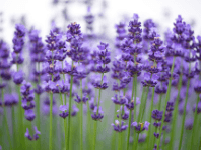
A great all-rounder. Good for skin conditions. Use for stress, anxiety and depression, to calm emotions and to encourage a good night’s sleep. Helps to clear the mind and assist mental clarity.
Peppermint
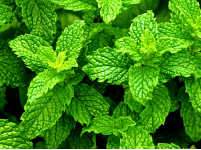
Another great oil for clearing the mental fog. Use to improve focus, motivation and concentration. Can also relieve headaches and muscular pains. Widely used for a number of digestive problems including IBS.
Jasmine

Use to calm anger issues and for relieving stress and anxiety. Encourages positive thinking and increases energy levels. Has antibacterial and antimicrobial properties. Also good for the sex drive.
Rosemary
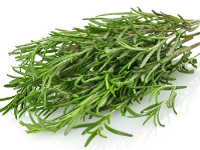
Another great all-rounder. Its many uses include stress and nervous tension relief, improving mental clarity and brain function, fighting fatigue and boosting the immune system. Also for flatulence.
Clary Sage
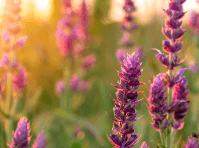
Similar to lavender (and great when blended together with it), known for its calming and soothing properties. Excellent for coping with stressful situations and restoring feelings of balance and equilibrium.
Orange
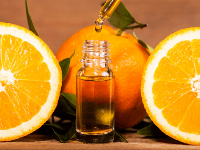
Excellent for lifting the mood and boosting energy in the afternoon slump. Can help with stress relief and pain relief. Has antimicrobial properties. Helps to regulate heart rate and blood pressure. Give it a try if you’re constipated.
Of course, the list of essential oils goes on, and then there are the blends! Keep it simple to begin with and start small with just a few drops. Follow the recommended dilutions and uses for each oil. Remember to check out whichever oils you decide to use as they have different properties and some come with extra precautions.
But don’t let this put you off. By getting to know the basics and then spending a few minutes to check your chosen oil, you’ll surely begin to enjoy the many benefits that aromatherapy and essential oils have to offer.
Aromatherapy In The Workplace – Summing Up
Since ancient times plant extracts, in particular essential oils, have been used for cosmetic and therapeutic purpose. With continual development and discovery, plant based medicines were the everyday norm in the middle ages. Later – before personal hygiene was mastered – aromatic waters were the deodorant of the day, covering up all manner of nasty smells.
The production of synthetic medicines initially saw a decline in the use of natural remedies and was perhaps responsible for these remedies being regarded as quackery due to the synthetic production of lesser quality oils and the like.
However, as happens so often, the trend came back around again and since the 20th century aromatherapy has seen a gradual rise in popularity once more. In fact today, essential oils are more popular than ever.
That’s great news, but it’s important to understand that these oils are natural chemicals which should be used with a good basic understanding and an amount of caution. We’ve given you the basics, but remember to check each oil for specific uses, precautions and dilution ratios before you use it.
So many of us are dealing with unhealthy levels of stress and this can affect all areas of our life – both inside of work and out. Stress relief is just one of the benefits of aromatherapy. It can also help to relieve anxiety and depression, calm the nerves, clear the mind, improve mental focus, encourage better sleep, ease muscular pains, give your sex life a boost and clear the bowels…plus much more!
We’ve just covered the tip of the iceberg in this post so if your interest has been piqued, do follow the links above for further information. Aromatherapy is a fascinating subject, and it’s so much more than having nice smells around.
If you have any questions reach out and let us know. Likewise we’d love to hear how you get on with aromatherapy when you try it out. Which oils do you use? What methods work best for you? What brand did you opt for and why? Leave a comment in the box below or email jane@jetofficesolutions.com.
Check out the second part in our Wellness at Work series…About Yoga in the Workplace.
